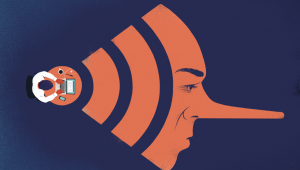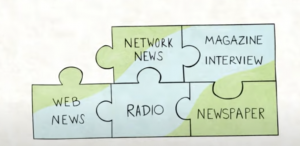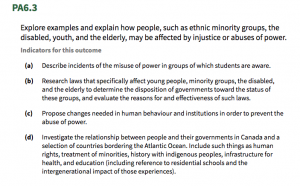What is Digital Literacy?
To be completely honest, up until the beginning of October, I had no idea what it was. If you would have probably said something along the lines of “IDK, reading e-books or something”. So before I get into the rest of this blog let’s go over some definitions of Digital Literacy so we all have a better idea moving forward.

9 Elements of Digital Citizenship tell us that “Digital literacy includes the discussion of media literacy and the ability to discern good information from poor, such as “fake news” from real news.”
The Ministry of Education and Child Care in British Columbia says digital literacy is “the interest, attitude and ability of individuals to appropriately use digital technology and communication tools to access, manage, integrate, analyze and evaluate information, construct new knowledge, create and communicate with others”.
To summarize the common ground from the definitions below I have come up with the following personal definition:
“Digital Literacy is the ability to locate and evaluate information within the digital world and come to an informed decision on whether it is fake news, or real news”
What is Fake News?
Umm, lets start with maybe saying its news that is not true? But to be more specific, TRU Libraries says it well: fake news is a hoax that is meant to mislead in the hopes of a financial or political gain of those spreading it, with its’ purpose being that it spreads information, especially of a biased or misleading nature, which is used to promote or publicize a particular political cause or point of view.
Let’s be honest – fake news doesn’t just exist in the digital world but, the more time we spend on technology, the more we are exposed to both fake and real news through digital platforms. In my personal experience, I see it multiple times a day on Facebook and other social media platforms.
How can/ should it be taught in a middle years classroom?
YES! It absolutely should be taught in the classroom – I know if I am seeing fake news on my Snapchat, my Grade 6 students probably are too. This is the age where students are starting to get their own emails, phones, social media accounts, etc. where they will be exposed to all sorts of fake news, phishing emails, trolls and so on.
I think that the best way to approach this with students is to teach them how to find reliable news sources so they are starting their search on a strong note. By complimenting the first approach we should also teaching them how to identify fake news because chances are they are going to be exposed to that without even searching for it.
- Finding reliable news: Get the news straight from the source, avoiding the “middle-man”. This could be from news websites, social media pages rather than from a blog post by a local high school teacher who was not involved in any capacity. Allow

Screenshot from Devon Brown for news sources to get the news, check a few times a day rather than every 3-5minutes. Build a puzzle – if a direct source isn’t available, take the commonalities from multiple sources to piece together the story.
- Teach our students what fake news can look like: Bring REAL examples to the classroom (like I said, they are everywhere so this shouldn’t be hard). Increase activities where students are encouraged to put on the detective hat. Though this was not in the article linked above, I think it is important to have classroom discussions around what sort of organizations would email you for information vs. those that wouldn’t – helping identify phishing emails.
In our EDTC 300 class we worked through some “Fake or Real” examples and they can be tricky! I think that this would be an awesome activity to do with a middle years classroom – it is not only eye opening but definitely fun and engaging.

Many outcomes in the Saskatchewan Curriculum has the word “Investigate” – for example see the screenshot to the left. I think that this is an invitation to have students conducting their own investigation through online sources – be it current or historic. It is important students can identify the difference between real or fake news for both academic and non-academic reasons – it is a life skill that I think the curriculum has encouraged us as teachers to build in our students.
NCTE Framework
When teaching Digital Literacy in my classroom I am positive I would be implementing many NCTE frameworks. To remain consistent with the earlier parts of this blog and how I would incorporate digital literacy into my classroom I believe that this would allow for my students to Consume, curate, and create actively across contexts. Especially in connection to my example with the curriculum I believe I would encourage students to analyze, examine, review, etc. of the information that they find digitally.

I also had no idea what Digital literacy was about until now, so it’s great to see I’m not alone. I like that you made a definition that is more understandable for you as the various definitions include sooooo much information in them. There’s so many different parts to digital literacy so it’s interesting to see how you’ve summarized it. I also really like that you highlighted the importance of investigation in your implementation. I think one of the most important and overlooked parts is learning how to be a detective and what the right questions to ask are. Thanks for such an informative post Allison!
Hi Ava – I am happy to hear I wasn’t alone with just being introduced to Digital Literacy. Looking up the definition gave me a bit over information overload so I thought summarizing it would be how I could best move forward in my understanding of what it is – glad it helped you as well!
This is really well written and interesting! I did know what digital literacy was, but I tend to be on the side of – Don’t believe anything you read on the internet, which is probably also not a healthy or great attitude. I agree that students today need to learn digital literacy in school. They are going on the internet younger and younger whether we want them too or not, so they better know how to take care of themselves! Great post1
Yes I agree! The better we prepare them, the more successful and prepared (lol) they will be on their digital journeys. Thanks for your comment, Robyn!